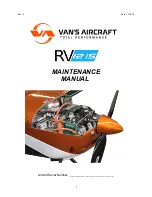
7
The length of the main brake lines is adjusted at the factory to the length
established during homologation. However, the length can be changed
to adapt to the pilot’s flying style. Nevertheless, we recommend that you
fly for a while with these, set at the original length. This will allow you to
become accustomed to the HOOK 4’s original flying behaviour. If you then
decide to change the length of the brake lines, untie the knot, slide the line
through the brake link to the desired length, and strongly re-tie the knot.
Qualified personnel should carry out this adjustment. You must ensure that
this adjustment does not slow down the glider without any pilot input. Both
brake lines should be symmetrical and measure the same length. The most
recommended knots are the clove hitch knot or bowline knot.
When changing the brakes length, it is necessary to check that they do not
act when the accelerator is used. When we accelerate the glider rotates
over the C riser and the trailing edge elevates. We must check that the
brake is adjusted taking in consideration this extra length in acceleration.
3. THE FIRST FLIGHT
3.1 CHOOSE THE RIGHT PLACE
We recommend that the first flight with your HOOK 4 is made on a
smooth slope (a school slope) or in your usual flying area.
3.2 PREPARATION
Repeat the procedures detailed in chapter 2 UNPACKING AND
ASSEMBLY in order to prepare your equipment.
3.3 FLIGHT PLAN
Draw out a flight plan before take-off in order to avoid possible flight
errors.
3.4 PRE-FLIGHT CHECK LIST
Once you are ready, but before you take-off, carry out another equipment
inspection. Ensure correct installation of all equipment and that all lines are
free of hindrances or knots. Check that the weather conditions are suited
for your flying skills.
3.5 WING INFLATION, CONTROL, AND TAKE-OFF
Smoothly and progressively inflate the wing (chapter 2.6 INSPECTION
AND WING INFLATION ON THE GROUND). The HOOK 4 inflates easily
and does not require excessive energy. It does not tend to over-take you,
so the wing inflation phase is carried out without anguish. These take off
characteristics provide a perfect control phase and enough time for the
pilot to decide whether to accelerate and take off.
Whenever the wind speed allows it, we recommend a reverse launch
technique; this type of launch allows you to carry out a better visual
check of the wing. The HOOK 4 is especially easy to control in this
position in strong winds. However, wind speeds up to 25 to 30 km/h
are considered strong and extra consideration should be given to any
thought of flight.
Preparation and positioning of the wing on the take off is especially
important. Choose a location which is appropriate for the direction of the
wind. Position the paraglider as if it were part of a large circle, taking into
account the shape of the canopy in flight. All this will assist in a trouble
free take-off.
3.6 LANDING
The HOOK 4 lands excellently, it transforms the wing speed into lift on the
pilot’s demand, allowing an enormous margin of error. You will not have to
wrap the brake lines around your hand to get greater braking efficiency.
Summary of Contents for Hook 4
Page 1: ...USER S MANUAL HOOK 4...
Page 16: ...11 3 RISERS PLAN 16...
Page 17: ...11 4 SUSPENSION PLAN 17...

































